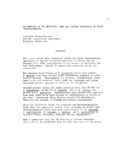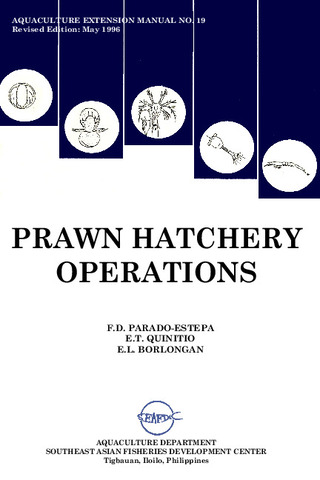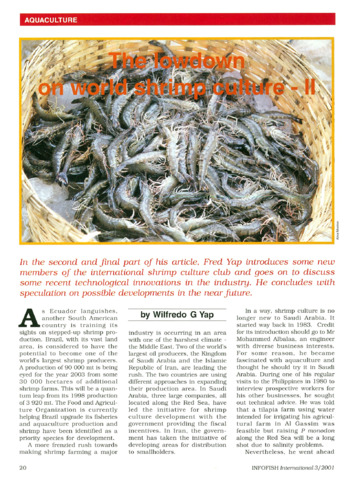Development of broodstock for small-scale shrimp hatchery (with particular reference to Penaeus monodon)
- Global styles
- MLA
- Vancouver
- Elsevier - Harvard
- APA
- Help

閲覧/開く
日付
1982Page views
3,429ASFA keyword
AGROVOC keyword
Taxonomic term
Metadata
アイテムの詳細レコードを表示する
Share
抄録
To be self-sufficient in spawner/larval supply, a small-scale Penaeus monodon hatchery should have the following: 1) broodstock tanks or pens depending on location and other factors; 2) pond sources of broodstock of appropriate size and age; and 3) maturation by ablation (optional for P. indicus and P. merguensis).
Suggested Citation
Primavera, J. H. (1982). Development of broodstock for small-scale shrimp hatchery (with particular reference to Penaeus monodon). In Working Party on Small-Scale Shrimp/Prawn Hatcheries in Southeast Asia, Semarang, Central Java, Indonesia, 16-21 November 1981 (Vol. II. Technical Report, pp. 71–76). Manila, Philippines: South China Sea Fisheries Development and Coordinating Programme.
Type
Conference paperCollections
- Conference Proceedings [299]
Related items
Showing items related by title, author, creator and subject.
-
An overview of the nutrition, feed and feeding techniques of prawn penaeid/shrimps
Piedad-Pascual, Felicitas (Philippine Council for Aquatic and Marine Research and Development, 1989)This paper echoes what transpired during the first International Conference of Penaeid Prawns/Shrimps held in Iloilo City in December 4-7, 1984, particularly on the Nutrition nd Feed Development. Around 25 papers were ... -
Series: Aquaculture extension manual; No. 19
Prawn hatchery operations
Parado-Estepa, Fe D.; Quinitio, Emilia T. ; Borlongan, Emeterio L. (Aquaculture Department, Southeast Asian Fisheries Development Center, 1996-05)
The manual, an updated version of the 1984 SEAFDEC/AQD manual, presents the underlying principles and step-by-step instructions of prawn larval and post-larval rearing. The techniques described are not only applicable to ...
; Borlongan, Emeterio L. (Aquaculture Department, Southeast Asian Fisheries Development Center, 1996-05)
The manual, an updated version of the 1984 SEAFDEC/AQD manual, presents the underlying principles and step-by-step instructions of prawn larval and post-larval rearing. The techniques described are not only applicable to ... -
The lowdown on world shrimp culture - II
Yap, Wilfredo G. (INFOFISH, 2001)This paper introduces some new members of the international shrimp culture club and goes on to discuss some recent technological innovations in the industry, particularly the polyculture of tilapia (mainly Oreochromis ...





